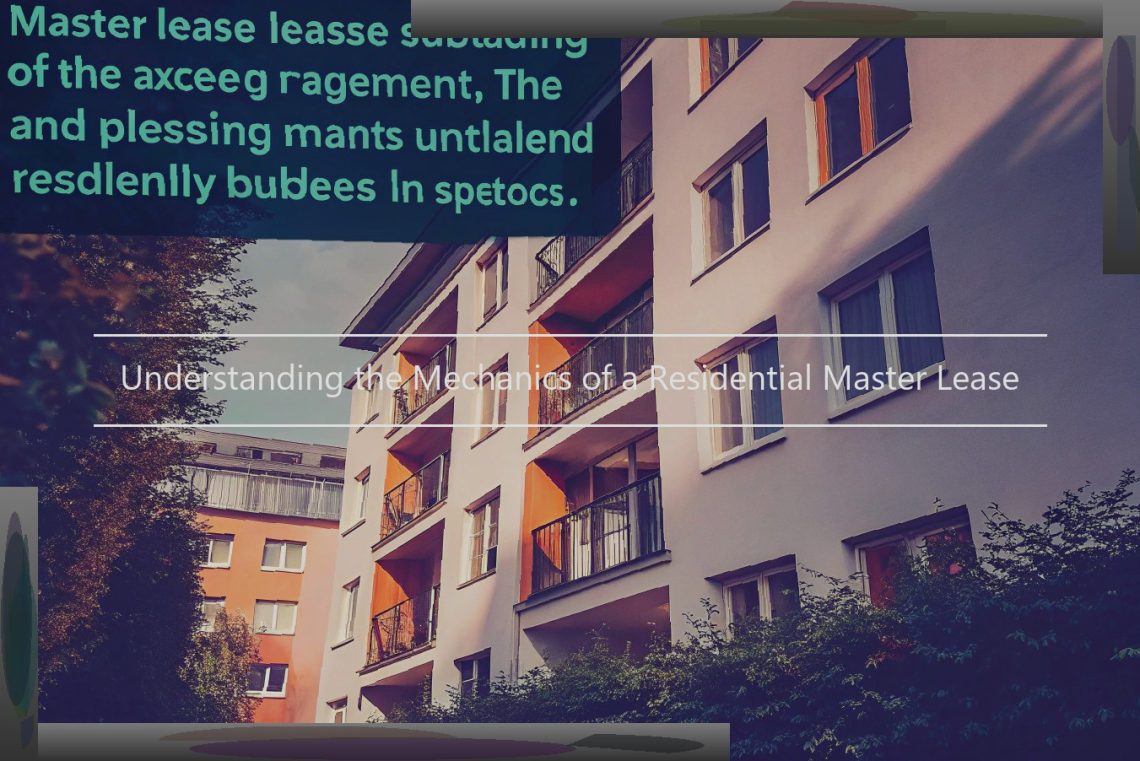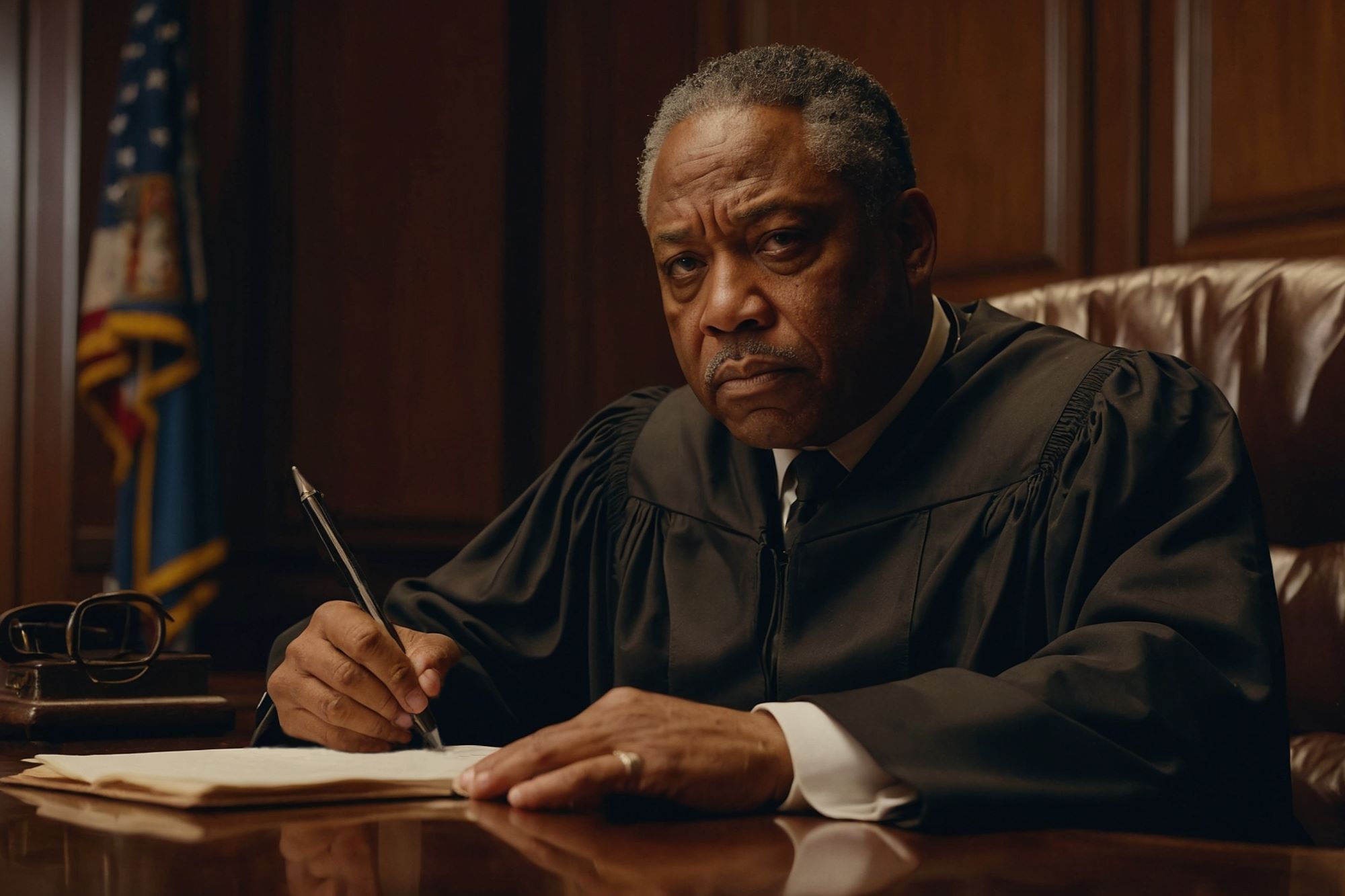
Understanding the Mechanics of a Residential Master Lease
What is a Residential Master Lease?
One of the fastest growing trends in the rental housing industry is the so-called master lease agreement. Not much has been written about these agreements, especially in the context of residential property. By definition, a master lease is a single contract, signed by a landlord, which creates a master tenancy, separate from the subtenancies, for a block of units for a specified period of time. The most common form of master lease in the context of residential property is one in which an owner lessor leases a block of units (in an apartment building for example) to a tenant lessee who then subleases some or all of the units to multiple residential tenants . In exchange for the right to occupy the units, the tenant lessee pays the owner the agreed upon rent, but the owner is not responsible for the payment of utilities and amenities, which are paid by the tenant lessee. The tenant lessee maintains the property, and in return, receives all rental income from subleasing the units it rents to residential tenants. It is certainly the case that a master lease agreement in the context of residential properties is significantly different from the more common commercial master lease agreement.
Elements of a Residential Master Lease Agreement
A master lease agreement is a critical component in the subleasing of a property. It lays out all the terms that fasten the long term lease and the short term lease. The tenant relies on the master lease for security and financial planning. Therefore, it is vital that the tenant understands the essential elements of this binding document. The following are the key components to look for when entering into a commercial real estate master lease.
Duration
The master lease agreement will generally include a duration clause. This will set out the time frame in which the tenant can sublet the property. In most cases, the duration matches the term of the lease. However, in some lease agreements, the duration could extend throughout the term with an early termination clause available to both the tenant and landlord. The agreed upon duration is essentially the time frame in which the tenant may sublet the property.
Rental Amount
The rental amount is another key component of the master lease agreement. This figure addresses the rent that the tenant will pay to the landlord. However, it is essential that the agreement also includes the rental figure the tenant will charge to its tenants. The amount of rent the tenant charges to its tenants is critical in establishing the basic income required to break even on the rental of the property. If this figure is not included in the agreement, the landlord has no clue as to the amount its tenant is charging to the subtenant. This could have a devastating effect on your ability to plan for maintenance, operational costs, and other property related expenses.
Maintenance
The master lease agreement should also include a maintenance clause. This clause sets out the responsibility and liability of both parties if/when maintenance arises. The amount of maintenance covered by the landlord or tenant could potentially make or break the entire agreement. The party responsible for the majority of the maintenance could suffer a loss by having to pay all the costs. A master lease agreement should lay out every detail that could result in a loss or windfall for both the landlord and tenant.
Termination
The master lease agreement should address termination. In most agreements, if the tenant is extremely successful or does not have the time to manage the property, the lease could potentially be terminated with a specific notice period. It is also essential that the tenant knows what provisions are available regarding an early termination by the landlord.
Advantages for Property Owners with a Master Lease Agreement
The main advantage of a master lease for the property owner is a guaranteed minimum flow of income. Apart from any other features in the lease, and if the tenant meets the minimum obligations under the lease, the tenant will pay rent each month. This assures the landlord has a minimal income for the property over the life of the lease. The landlord saves time and expenses associated with the monthly and other routine operations of either renting to the tenants in the property or managing the property directly. The landlord can also benefit by selling the property at a higher price than would be the case if the property were offered for sale without the benefits of a lease showing the tenant is obligated the property for an extended period of time. The increased sale price is based on the level of income paid over the term of the lease and the longevity of the lease.
Benefits and Rights for Tenants of a Master Lease
Tenants have the potential to receive several benefits from entering into a master lease agreement. First, tenants can provide themselves with the flexibility to operate their business by minimizing delay and costs in securing new locations. With a master lease in place, should the tenant need to move from one unit to the next, it simply needs to obtain the landlord’s consent and then notify the subtenant who is moving.
Second, tenants can save substantially on both rent and legal costs because a master lease facilitates a "vanilla" lease form that can be used in many different locations, thus reducing the time and cost traditionally associated with negotiating a lease.
Lastly, tenants will have access to various locations, thus expanding their reach in the local market. If a tenant enters into a nationwide master lease with a single landlord with locations in many different cities or regions, the tenant will have instant access to those properties.
Pitfalls Associated with Master Lease Agreements
While there are many advantages to master leasing, there are also some potential risks and loss exposures that landlords and tenants should be aware of. One important risk involves liability to the general public. Allowing tenants to control the property may expose the landlord to liability for injury or damage that occurs in common areas of the property, as well as liability for criminal conduct committed by a tenant or tenant’s guest. Not all commercial liability policies respond the same way, so further investigation is warranted.
Another risk is the vacancy involved with "turnover" between master tenants. If the master tenant moves out of the property, or its lease with the landlord is terminated or expires, the property is left vacant pending re-lease of the space under the same terms or renegotiation of new terms. During this period, the master tenant may be responsible for operating expenses and improvements . Another risk associated with the turnover between master tenants is that a new master tenant, or a re-negotiated agreement with the existing master tenant, will not be as profitable to the landlord.
A third liability risk arises if a developer goes out of business after completing the master lease but before the apartments are renovated and rented to tenants. The developer may not have sufficient funds to complete the renovations and/or pay for tenant build outs. This leaves the master tenant on the hook for the obligations it has under its master lease.
A fourth risk involves litigation. What happens if the master tenant is sued by tenants that feel that they were sold units based on a false promise or inadequate disclosure? On what basis can the master tenant seek reimbursement from the landlord or the builder? How are any judgments obtained in favor of a tenant in a lawsuit against the master tenant satisfied?
Legal Implications and Compliance Issues
Legal Requirements and Compliance
The process of crafting, reviewing, and entering into an agreement that outlines the expectations of the landlord and the tenant is actually quite complex. There are various legal requirements and compliance obligations that must be considered. In the event an agreement does not align with the relevant laws it may be invalid. If an agreement is deemed to be a lease, then many issues may arise if the conditions of landlord-tenant laws are not met.
The state you live in will dictate the laws and regulations that your master lease agreement must meet. It’s vital to consult with a legal attorney and/or real estate professional in order to fully understand any and all compliance issues that might arise from the agreement after execution.
Creating and Drafting a Master Lease Agreement
The negotiation process for a master lease agreement usually begins with an outline of the business terms, including the legal description of the property, the amount of rent and the use of the property. From there, the negotiation process can begin, typically with the tenant delivering a copy of its form lease. The landowner and tenant then review the proposed lease and set forth a list of changes and redlines to provde to the other party for review. Often they will do this several times until both sides agree upon the business terms and then a draft agreement is prepared. Depending on the complexity of the transaction, the landowner’s attorney and tenant’s attorney may work together to finalize the form of the master lease agreement.
At a minimum, a master lease agreement will include the following:
• Description of the Tenant Entity: Landowners want to know who they are dealing with as much as possible. And they want to know it in advance; they won’t want the tenant to be able to change legal entities prior to executing the lease, unless it really doesn’t matter to the landowner. The point is to identify the tenant entity and who has authority to act on its behalf as soon as possible.
• Description of the Property: A legal description of the property to be leased is critical, and is typically incorporated by reference into the lease. For example, the parcel number can be listed under Exhibit D. This paragraph may also include a provision that the tenant may only occupy the property described (unless the tenant obtains the landowner’s approval).
• Description of the Use: The lease will describe the use which is being leased, i.e. retail, office, residential, restaurant, mixed use, recreational, etc. Landowners want to know how the property is going to be used and more importantly, tenants want to make sure that they can use the property in the manner they intend. For instance, if you want to use the property as a restaurant or a hotel, that would be something to include in the master lease agreement.
• Description of Permitted Encumbrances: The landowner will want to include description of any encumbrances permitted on the property during the term of the master lease agreement, whether by reference to other documents, or a description of the nature of the encumbrance.
• Description of Annual Rent as Well as any Percentage or Performance Rent, Ad Valorem Taxes and Indexing of Rent: Similar to the description of the permitted use of the property, the annual rent should be described in the lease plus any additional rent, whether that is a percentage of the tenant’s gross sales or some amount based on a predetermined formula. The master lease may also list the calculation of any additional rent, such as the landowner’s real estate taxes, which may be based on a certain percentage of the landowner’s ad valorem taxes. The lease may also include an indexing of the rent and how the rent is indexed, such as based on a consumer price index.
• Lease Term: The term or duration of the agreement should be outlined in the agreement. In addition, the parties may agree to an option to extend the initial term. If the performance rent is substantial, a lender may require an option to renew the master lease agreement if requested by the landowner. As an extension of the lease terms, a description of what will happen after the master lease agreement expires may also be included.
• Clauses on Events of Default and Remedies: Similarly to a regular commercial lease agreement, the events of default for the master lease agreement should be listed, along with the remedies, such as the right of the landowner to terminate the lease agreement, the ability of the landowner to remove the tenant’s machinery and equipment from the leased premises. The landowner may also want to reserve its right to terminate the lease without necessary cause (without advanced notice) if there is a foreclosure on the underlying property. Another area of concern for landowners is whether the landowner is entitled to review the lease agreement for any of its tenants and to require that the tenant account for its unpaid rent.
• Conditions Precedent: A description of any conditions that must be met prior to the execution of the lease agreement. For instance, obtaining any required permits, licenses or entitlements that may be required for the use of the property.
Keep in mind, it is very likely that negotiations between you and the tenant will go back and forth multiple times, and we recommend beginning negotiations as early as possible to allow time for grey areas of the lease to be worked out.
Case Studies and Practical Scenarios
In reviewing the real impact of residential master lease agreements, there are a number of case studies to consider. For example:
- In a recent situation where an investor purchased an apartment building with the intention of rehabilitating it and placing it or its rooms as short-term rentals, a master lease scenario was reviewed. With the seller ready to take a loss on the sale of their property due to market fluctuation, the buyer was looking to include master leases in the purchase of the building so that they could cash flow quickly. In this case, the use of master leases worked out well for both parties, due to short sales stipulations and the cash flow needs of the buyer.
- A large Bay Area 7,000 unit apartment complex was recently sold with master leases in place. The new owner has immediate access to lease payments from master tenants which are then resold as individual short-term rentals . The apartments have been renovated and updated before being sold as bedrooms in student housing for UC Berkeley and Stanford, UC Berkeley/Bay Area transients and leisure travelers. In this example, master leases have proven to be an excellent way for the new owner to cover their mortgage while the apartments are being updated.
- Using a similar approach, a 20-unit residential apartment complex was sold using a master lease structure in one of the hottest markets in the Bay Area. This property was for sale as a multifamily property but restructured into an assemblage for development is proving more valuable. Just as with the above, it will continue to cash flow while plans are laid for redevelopment.
These cases illustrate the potential of master lease agreements for increasing returns on investment and illustrating that a rental property can be valuable for more than traditional long-term leases.




